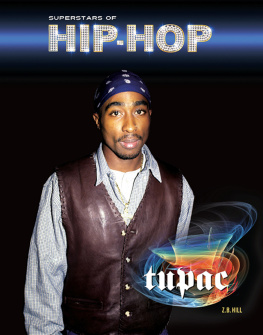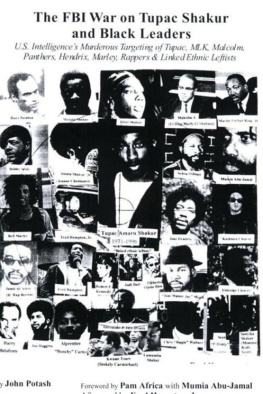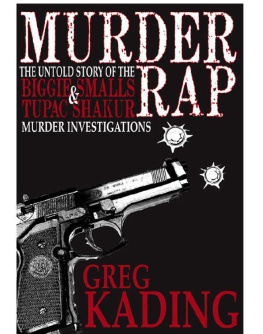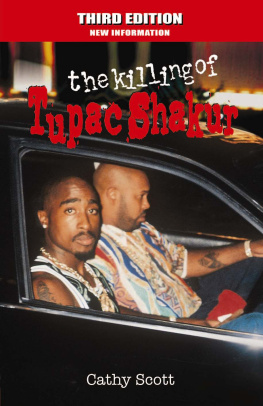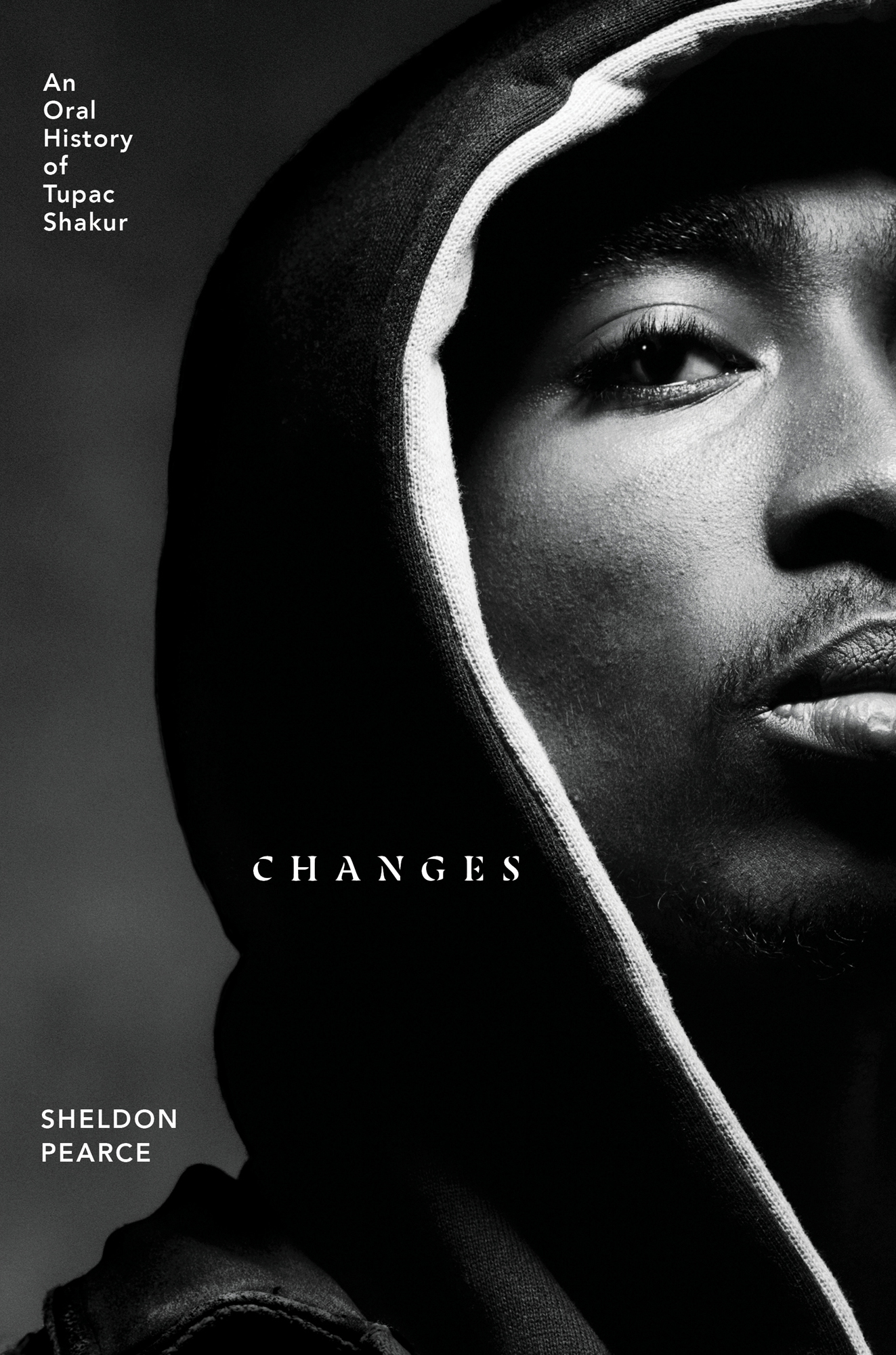Contents
Guide
An Oral History of Tupac Shakur
Changes
Sheldon Pearce

Simon & Schuster
1230 Avenue of the Americas
New York, NY 10020
www.SimonandSchuster.com
Copyright 2021 by Sheldon Pearce
All rights reserved, including the right to reproduce this book or portions thereof in any form whatsoever. For information, address Simon & Schuster Subsidiary Rights Department, 1230 Avenue of the Americas, New York, NY 10020.
First Simon & Schuster hardcover edition June 2021
SIMON & SCHUSTER and colophon are registered trademarks of Simon & Schuster, Inc.
For information about special discounts for bulk purchases, please contact Simon & Schuster Special Sales at 1-866-506-1949 or .
The Simon & Schuster Speakers Bureau can bring authors to your live event. For more information or to book an event, contact the Simon & Schuster Speakers Bureau at 1-866-248-3049 or visit our website at www.simonspeakers.com.
Interior design by Ruth Lee-Mui
Jacket design by Gail Anderson
Jacket photograph by Albert Watson, courtesy of Paramount Pictures. Paramount Pictures Corp. All rights reserved
Library of Congress Cataloging-in-Publication Data is available.
ISBN 978-1-9821-7046-2
ISBN 978-1-9821-7048-6 (ebook)
CHORUS (in order of appearance)
CHUCK WALKER, University of California, Davis, professor; author, The Tupac Amaru Rebellion
SHARONDA DAVILA-IRVING, childhood friend of Tupac and Black Panther Party daughter
JANE RHODES, University of Illinois at Chicago professor; author, Framing the Black Panthers
LEVY LEE SIMON, actor, 127th Street Repertory Ensemble
RICHARD PILCHER, retired principal acting teacher at Baltimore School for the Arts
BECKY MOSSING, Baltimore School for the Arts class of 1988
STELLA NAIR, University of California, Los Angeles professor
KENDRICK WELLS, friend and personal assistant
RYAN D ROLLINS, Marin City rapper, member of One Nation MCs
BARBARA OWENS, former English teacher at Tamalpais High School
PUDGEE THA PHAT BASTARD, New York City rapper
D-SHOT, Vallejo rapper, member of the Click
ROB MARRIOTT, former Source editor and Vibe writer
JUSTIN TINSLEY, The Undefeated staff writer
KHALIL KAIN, actor, Raheem in Juice
GOBI RAHIMI, videographer, Look Hear Creations cofounder
JAKI BROWN, casting director for Juice
MARK ANTHONY NEAL, African and African American studies department chair at Duke University
LESLIE GERARD, former assistant and A & R at Interscope Records
MOE Z MD, Los Angeles producer
KEVIN HOSMANN, art director and designer for 2Pacalypse Now
KARL KANI, fashion designer
ALEX ROBERTS, former head of business affairs at Death Row Records
TIM NITZ, engineer
COLIN WOLFE, Los Angeles producer
ERIC ALTENBURGER, art director and designer for Strictly for My N.I.G.G.A.Z and Me Against the World
BLU, Los Angeles rapper
WENDY DAY, Rap Coalition founder
ETHAN BROWN, author, Queens Reigns Supreme
TERRENCE KLEPT HARDING, Brooklyn rapper, Junior M.A.F.I.A. member
EZI CUT, Danish DJ and producer
CHARISSE JONES, former New York Times staff writer; USA Today correspondent; coauthor of Shifting: The Double Lives of Black Women in America
RICHARD DEVITT, juror in Tupacs sexual abuse case
CATHY SCOTT, former Las Vegas Sun crime reporter; author, The Killing of Tupac Shakur
DR. LEON PACHTER, former trauma department chief at Bellevue Hospital
GREG KADING, former LAPD detective
ANGELA ARDIS, Tupac pen pal; author, Inside a Thugs Heart
VIRGIL ROBERTS, former president of SOLAR Records
TOMMY D DAUGHERTY, former Death Row Records engineer
CORMEGA, New York City rapper
NAHSHON ANDERSON, former Look Hear Creations intern
ERIC FARBER, former attorney for the Tupac estate
DR. JOHN FILDES, former trauma department chief at Las Vegass University Medical Center
CHUCK WALKER Initially, he wasnt that big a hero in colonial Peru. The Spanish were so petrified they really tamped down on, like, publicity. Its really the twentieth century, and particularly with this really peculiar 1968 military government that is leftist.
This is a moment when US-supported right-wing military regimes are dominating. Peru has a left-wing regime. And theyre looking for a hero. He becomes the national symbol. Hes indigenous but mestizoso in other words, hes got European blood. Hes cool looking. Hes got a ponytail. He looks good on a horse. The other national heroes had all been white dudes from the coast.
So in the sixties, people wrote more about him. What I understood is the Black Panthers chapter that Afeni was involved with in New York City had a reading group, and they were understandably looking for revolutionaries of color. They read about Tpac Amaru II and thought it was cool. Afeni said later that she named her son that because she wanted him to be worldly.
I
SHARONDA DAVILA-IRVING In our community, we would be considered extended family. Our mothers were pregnant together. We were born together. Our mothers were both in the Black Panther Party. When we were small, my family moved to Jersey City. So when we saw each other, we were going there or coming here. We were taught to be leaders from the beginning. When you dont really know boundaries, in a positive sense, being amongst the people is important to your existence. If your parents are immersed in working for the people, then that means as a kid, youre right there with whoever they are going to visit or whoever they are going to support. You play with all the kids that are there.
JANE RHODES The founding of the Panthers is very much rooted to the dual sort of transitions of both civil rights and Black Power activism during that period. Theyre very much indebted to and engaged with the sort of rising Black nationalist thinking and affinity thats coming out of SNCC Theres a whole constellation of people who they sort of saw and heard and read.
Both Huey Newton and Bobby Seale, who are ostensibly the founders of the Black Panthers, sort of came up in the kind of civil rights, Black community activism of the period. They worked for antipoverty agencies. Bobby Seale was a Vietnam War vet. And so he was very much situated within that kind of antiwar veterans movement. They both are going to Merritt College, which is a junior college, and they get caught up in all of the stuff thats going on. All of this is going on simultaneously. Its just this maelstrom of activism. Its not surprising that this would happen in Oakland and San Francisco, in particular. Those cities kind of epitomize the crisis and the grievances of young Black people. The urban renewal and the rising inequality and the destruction of the postwar promise had struck a chord.
At Merritt College, they are part of a Black student group called the Student Advisory Committee. They meet each other, and theyre both sort of underwhelmed by the sort of activist potential of their colleagues at the college. They felt like its not radical enough, its not militant enough. They wanted to really push for a much more sort of strident and militant kind of activism. One of the things that they did was they took it outside, away from the academy. Theyre sort of straddling class. They have the benefit of being well read and much more educated than a lot of the people around them. But they still are deeply identified with the brothers on the street. That very much shapes, I think, the underlying ideology of the party. Basically, they organize by pulling together some friends, a small group; there are just eight or nine folks that are sitting around debating, coming up with kind of grandiose ideas, but not really doing much.


